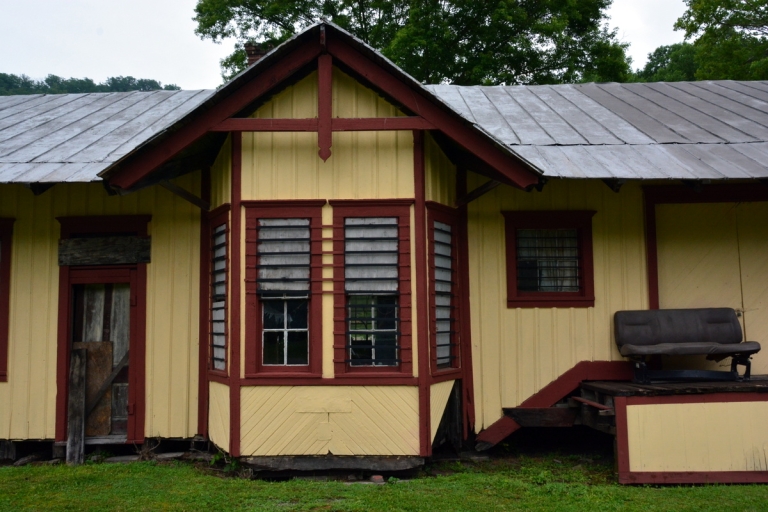
DUNLOW, W.Va. — The small, unincorporated community of Dunlow on WV-152 in southern Wayne County typically does not stir interest among passersby. Drive too fast, and you’ll miss its one significant landmark—a near-perfectly preserved train station sitting alone in an empty field.
Listed on the National Register of Historic Places in April, the Dunlow Norfolk & Western Railway Depot is one of only a handful of surviving resources from the railroad's Twelvepole Line, once part of its main thoroughfare connecting the coalfields of southern West Virginia to Ohio River and beyond. The tracks are long gone, but the depot remains as a defiant reminder of the community’s industrial past.
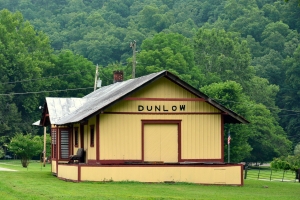
Around the late 1880s, Norfolk & Western Railway president Frederick J. Kimball sought to develop the coalfields along the West Virginia-Virginia border by opening access to new markets with his railroad. In 1890, the company began construction of the Ohio Extension, which began in Bluefield and ran in a northwest curve, crossing the Ohio River and going towards Ironton, Ohio.
In Wayne County, the extension followed Twelvepole Creek through the central part of the county, earning that section the name "Twelvepole Line." The N&W constructed a series of simple, wood-frame depots along the line to encourage local traffic—both passenger and freight. Facilities were built in Ceredo, Buffalo Creek, Lavalette, Ardel, Wayne, Coleman, Radnor, Wilsondale, and Dunlow.
The Dunlow Depot’s design, modest in size and relatively plain in appearance, was known in the railroad industry as a combination station because it could serve both passenger trains and freight trains.
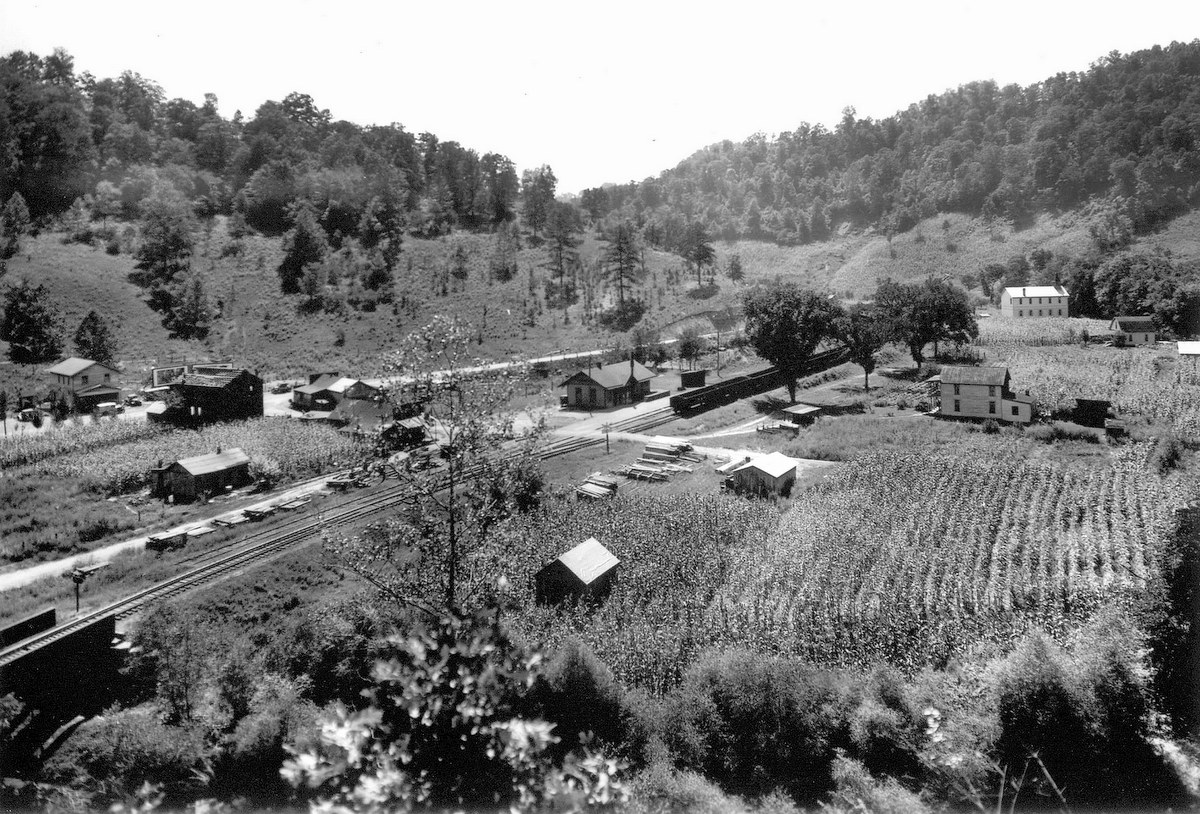
One side of the building contained waiting rooms for passengers, and the other had a spacious room with multiple sliding doors used to load, unload, and store cargo. Wood frame combination stations were often built cheaply and quickly in more rural communities that were too small to support the larger, more ornate stations seen in towns and cities.
The community of Dunlow was practically nonexistent until the N&W arrived. Surveyors, including former Confederate cartographer Jedediah Hotchkiss, laid out the town and placed the depot in the center. A cluster of homes and businesses swiftly mushroomed around the site.
The first train pulled into Dunlow on December 13, 1891. Less than a year later, the community had over 200 residents, and thirteen trains passed daily. It became home to several stores and offices, fraternal societies, a school, a church, a 70-room hotel, and at least two coal companies. A visiting Charleston Gazette-Mail reporter in July 1897 proclaimed that Dunlow was “one of the busiest as well as the most beautiful towns, along the Norfolk & Western Railway, in Southern West Virginia.”
Dunlow’s prosperity proved to be short-lived. The steeply graded, sharply curved nature of the Twelvepole Line caused bottlenecks among trains. Between 1902-1904, the N&W constructed a new line further to the west, along the Big Sandy River at the West Virginia-Kentucky border.
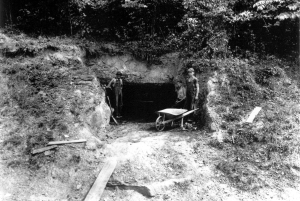
Trains loaded with coal from the south traveled up the Big Sandy line while empty coal cars returned down the Twelvepole. In 1925, the N&W converted the Big Sandy into a double-track line and diverted most of its coal traffic there.
Without the need to transport coal, traffic on the Twelvepole Line plummeted. By the early 1930s, only one train serviced Dunlow daily. The number of daily passengers fell into the double digits, and annual operating expenses were at a more than $100,000 deficit. The economic vibrancy of Dunlow withered, and the population declined to less than one hundred.
In 1933, the N&W received permission from the Interstate Commerce Commission to officially abandon the Twelvepole Line, citing it as a drain on resources. Dunlow’s last train left the depot on September 1, 1933. Days later, work crews began pulling out the rails and ties. Today, much of the former Twelvepole Line has been converted into paved roads.
After the line's closure, the N&W sold off its obsolete depots to residents, where most faded into history. The Dunlow Depot, however, has survived largely intact against all odds. As the community settled into a permanent existence as a small, rural hamlet, the depot maintained its position as the geographical center of Dunlow.
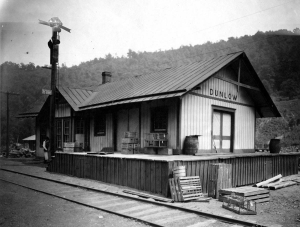
Its history after 1933 is somewhat murky. Some locals say a teacher lived inside the building at some point, and for a time, the property was fenced in and used as a bull enclosure. At other points it has sat vacant, miraculously spared from vandalism and the elements. Ninety years after the railroad was removed, the depot is almost indistinguishable from its days serving the Twelvepole Line.
The Dunlow Depot retains many of its original materials and is practically a time capsule for rail enthusiasts. The vertical wood siding is original, as are all the doors and windows. The interior floor plan is unchanged, with all the original flooring, wood paneling, and wainscotting intact. When the current property owner and his wife purchased the property in 2018, they found a treasure trove of paperwork still inside—rail schedules, tickets, telegrams, and other assorted railroad documents.
The depot’s ascension to the National Register of Historic Places makes it only the seventh site in Wayne County to be put on the list. It is also a relative outlier in the region; nowhere else in the southeastern Wayne County, southern Lincoln County, and northern Mingo County area is there any site with this designation.
While it does not offer legal protection, National Register listing unlocks opportunities for matching grants and historic rehabilitation tax credits to preserve the building. The property owner is keen to save this piece of local history for future generations.
So far, he has given the exterior a new coat of paint, replaced some rotting wood on the loading docks, and plans to install a new sheet metal roof. He hopes to one day turn it into a small community museum.
Sign up to receive a FREE copy of West Virginia Explorer Magazine in your email weekly. Sign me up!































